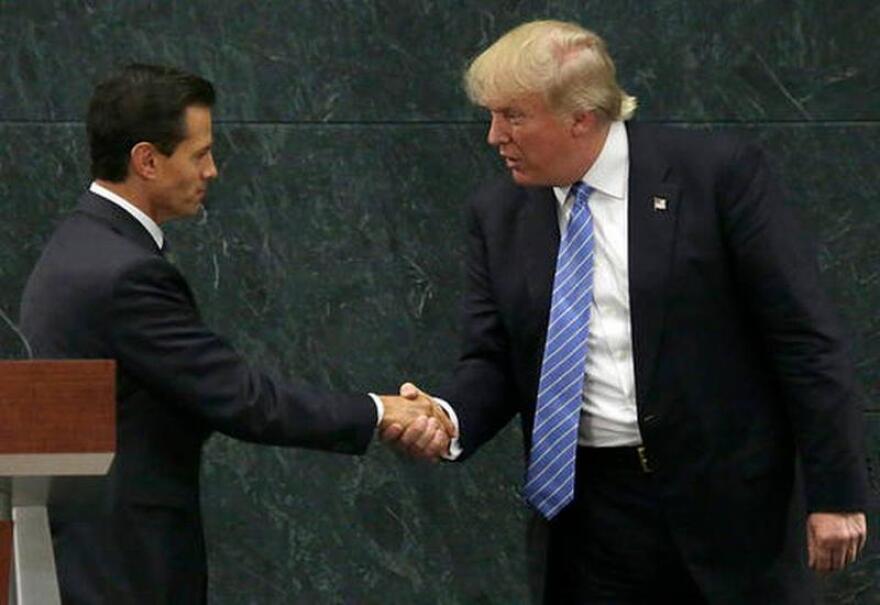COMMENTARY
You’ve heard of the federal Trade Adjustment Assistance program, right?
Don’t worry, neither have most Americans – even though what TAA does should have been front and center in the presidential campaign. More important than Hillary’s crafty emails. More significant than Donald’s creepy libido. Sorry, the President-elect’s creepy libido.
What’s at the core of TAA is at the heart of what got Donald Trump elected POTUS. Namely, the infuriated (and not completely unfounded) belief among U.S. workers that globalization has screwed them out of the middle class. Blackballed them from the American Dream.
Florida International University international business professor Jerry Haar reminded me about Trade Adjustment Assistance this week as we noodled over the reasons so many U.S. workers have been left behind in the 21st century.
Haar and I agree that the real culprit isn’t trade deals like NAFTA. Or undocumented immigrants. It’s the fact that the U.S. establishment Trump took aim at has so poorly prepared U.S. labor for globalization's tectonic shifts.
RELATED: Pena Nieto, Trump Embody the Ugly Cause of - and Response to - Immigration
That’s what TAA was supposed to do. And didn’t do. Or didn’t do to a high enough degree to keep almost half the U.S. electorate from embracing Trump’s populist and bigoted demagoguery.
But Trump isn’t likely to leverage TAA, either – which makes his election all the more mystifying if you genuinely care about the shaky future of the U.S. workforce.
TAA was created in 1962 in response to America’s post-war integration with the wider world. It’s undergone several iterations as international trade and the global economy become more intertwined and more entrenched. But its basic job is to train U.S. workers for more innovative jobs – helping them transition from the vanishing bricks-and-mortar economy to the emerging wires-and-information universe.
To restore their 20th-century livelihoods, U.S. workers are looking to Trump. He’s the guy whose campaign smeared Latin America – but he's as clueless as Latin America about how to save workers from getting smeared in the 21st century.
From NAFTA to CAFTA, TAA and programs like it should be a loud part of our free-trade regimen. As loud as that “giant sucking sound” of jobs flying abroad that Ross Perot harped on a quarter century ago.
But they’ve failed to engage enough workers – and, as Haar points out, too few workers have taken advantage of them – to put a meaningful dent in the vast, globalization-related job displacement happening in America today. Example: Carrier's decision this year to move air conditioner manufacturing plants from my home state of Indiana to Mexico.
Haar says what the U.S. might need now is "something like a Marshall Plan, aimed at the Rust Belt and including more training and retraining grants for workers, extensive federal funding for vocational institutes and community colleges.” But he also notes that local and state governments are often more effective at that kind of thing.
Either way, in Germany labor is more globalization-ready because 60 percent of its young workers are trained in apprentice programs in sectors like information technology. In the U.S. only 5 percent are apprenticed – mostly in non-tech sectors like construction.
Trump’s two-pronged answer, however, is to renegotiate or outright scrap trade deals like NAFTA – and deport millions of undocumented immigrants.
Both are more fantasy than fix. More scapegoat than solution.
MEXICANS ADRIFT
Trade deals can always be improved; but recoiling from them in this day and age would bring on a new recession. And undocumented workers – aside from being a linchpin of U.S. agriculture today – will just keep coming because their Latin American and Caribbean countries are even worse at what we’re so inept at:
Preparing their labor forces for globalization.
Mexico didn’t even bother to draft its own version of TAA until 2012. That was almost two decades after it inked NAFTA – which left workers like small farmers adrift in a globalization desert, one as desolate as the border they cross to pick fruit in places like Redland here in South Florida.

It didn’t occur to Latin America’s largest economy, Brazil, to get serious about tech education until it launched its Science Without Borders program in 2011. Brazil is suffering its worst recession in 80 years largely because its workers mostly heave raw materials to Asia – instead of getting tech-trained like Asian workers.
So to restore their 20th-century livelihoods, U.S. workers are looking to Trump. He’s the guy whose campaign smeared Latin America – but he's as clueless as Latin America about how to save workers from getting smeared in the 21st century.






